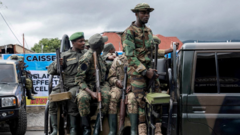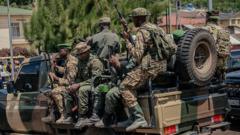With the ongoing civil war in Myanmar, resistance forces have captured approximately 15,000 prisoners of war, highlighting the complexities and challenges faced by rebel armies in managing these detainees under scarce resources.
Rising Conflict in Myanmar: The Dynamics of Prisoners of War

Rising Conflict in Myanmar: The Dynamics of Prisoners of War
As Myanmar’s civil conflict escalates, significant shifts in the treatment and management of prisoners of war have emerged within rebel territories.
Tens of thousands of citizens have armed themselves in Myanmar as a reaction to the military coup that took place over four years ago. Many have aligned with established rebel factions, while others have independently created new armed groups. Following a series of critical victories since 2023, the resistance has successfully taken thousands of prisoners, among them military personnel and their family members found on bases overtaken by rebels. Reports indicate that the opposition currently holds around 15,000 prisoners of war, according to the nonprofit organization People's Goal, which tracks captured junta forces.
The handling of these detainees poses considerable challenges for the rebel factions, who operate under limited resources and must manage various armed groups. Many rebel forces maintain makeshift prison camps scattered throughout areas under their control. The size of these camps varies, harboring anywhere from a few dozen prisoners to several hundred. In many instances, these captives are required to contribute to their sustenance, partaking in activities like farming and meal preparation for themselves.



















